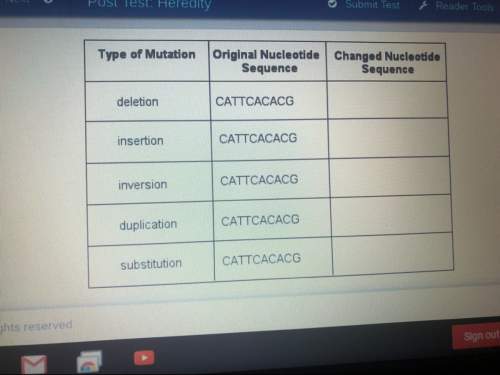
For a virus, what advantages and disadvantages does the lytic lifecycle have compared with the lysogenic lifecycle?
a. the lytic lifecycle allows viruses to reproduce more quickly but also kills the host and forces the virus to find a new host cell. b. the lytic lifecycle allows viruses to reproduce when the host cell reproduces, spreading to its daughter cells, but also gives the host cell more time to detect and fight the virus. c. the lytic lifecycle allows a virus to wait until conditions are optimal before reproducing but also gives the host cell more time to detect and fight the virus. d. the lytic lifecycle ensures that the virus won't be detected by the host cell but also kills the host and forces the virus to find a new host cell.

Answers: 2


Another question on Biology

Biology, 21.06.2019 19:30
Give the biological term for: structures that display characteristics of living organisms only within living cells
Answers: 1

Biology, 21.06.2019 20:00
What type of specimens where you able to see under each of the microscopes in the microscope activity
Answers: 1

Biology, 22.06.2019 03:30
Rease is an enzyme used by plants to break down urea (a nitrogen-containing compound) into carbon dioxide and ammonia. urease urea > > > carbon dioxide and ammonia ammonia is broken down by plants into a nitrogen source plants need to grow. thus, plants could not use urea as a nitrogen source unless it was first converted to ammonia. in soybean plants there are two different kinds of urease, one produced in the seeds and the other produced in the leaves of the plant. three types of soybean plants were used in a set of experiments: normal soybeans and two mutant strains, one lacking the urease in the seeds only (strain 1) and one lacking urease in the leaves only (strain 2). experiment 1 separate areas in a field were planted with normal, strain 1, and strain 2 soybeans. all types of soybeans appeared to grow, flower, and produce seeds equally well. there were no externally detectable differences among the strains. experiment 2 small pieces of plant leaves of equal weight were obtained from each type of soybean plant and separately placed on media in culture dishes. tissue growing in this way will become an unorganized clump of cells referred to as callus. to provide a controlled nitrogen source, half the tissue samples of each type were placed on media containing urea, and the other half of the samples were placed on media containing ammonia. after 30 days, the weight gain for each of the callus samples was determined. results are shown in the table below.
Answers: 2

You know the right answer?
For a virus, what advantages and disadvantages does the lytic lifecycle have compared with the lysog...
Questions

Mathematics, 18.09.2020 07:01

Mathematics, 18.09.2020 07:01

Mathematics, 18.09.2020 08:01

Mathematics, 18.09.2020 08:01

Mathematics, 18.09.2020 08:01

Social Studies, 18.09.2020 08:01

Geography, 18.09.2020 08:01

Mathematics, 18.09.2020 08:01

Mathematics, 18.09.2020 08:01

Arts, 18.09.2020 08:01

Mathematics, 18.09.2020 08:01

English, 18.09.2020 08:01

Geography, 18.09.2020 08:01

English, 18.09.2020 08:01

Mathematics, 18.09.2020 08:01

Mathematics, 18.09.2020 08:01

Social Studies, 18.09.2020 08:01

Mathematics, 18.09.2020 08:01

Mathematics, 18.09.2020 08:01

Geography, 18.09.2020 08:01




